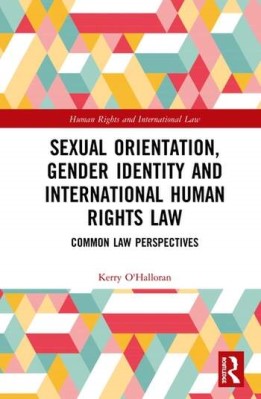
This book identifies, analyses and discusses the nexus of legal issues that have emerged in recent years around sexuality and gender. It audits these against specific human rights requirements and evaluates the outcomes as evidenced in the legislation and caselaw of six leading common law jurisdictions.
Beginning with a snapshot of the legal definitions and sanctions associated with the traditional marital family unit, the book examines the subsequently evolving key concepts and constructs before outlining the contemporary international framework of human rights as it relates to matters of sexuality and gender. It proceeds by identifying a set of themes, including the rights to identity, to form a family, to privacy, to equality and to non-discrimination, and undertakes a comparative evaluation of how these and other themes indicate areas of commonality and difference in the approaches adopted in those common law jurisdictions, as illustrated by the associated legislation and caselaw. It then considers why this should be and assesses the implications.